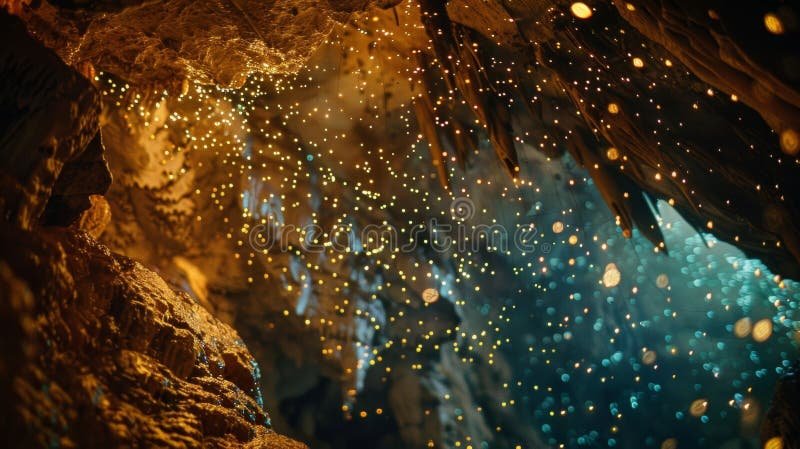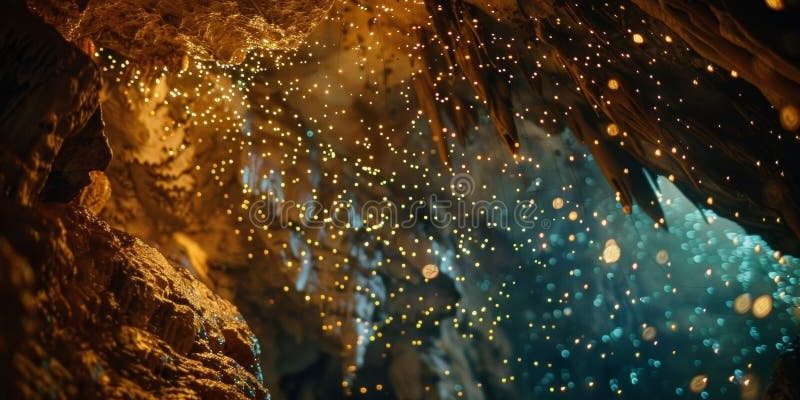
So, what exactly are these ideal humidity levels? Let’s dive into the world of caves and explore how moisture and temperature come together to create a perfect habitat for our glowing friends. Whether you’re a curious nature lover or someone who wants to learn more about these enchanting organisms, understanding cave humidity levels is key.
Why Humidity Matters for Glow Worms
Honestly, the relationship between humidity and glow worms is critical. These creatures need a certain amount of moisture in the air to survive and thrive. If the humidity levels drop too low, glow worms can’t access the water they need, which can lead to dehydration and, ultimately, their demise.
Caves naturally provide a high-humidity environment, often around 70-90%, which mimics their native habitats. Think of humidity as a protective blanket; it keeps glow worms cozy and helps maintain the moisture levels in the cave. Not only does this help them, but it also benefits the ecosystem around them, including the plants and insects that flourish in these damp conditions.
Moreover, the right humidity impacts the glow worms’ ability to produce light. Their bioluminescence is partly fueled by the moisture in the environment. Without enough humidity, their glow diminishes, and the stunning display we love to see can fade away.
The Ideal Humidity Range
Let me explain what the perfect humidity levels look like for glow worms. Generally, you’ll want the relative humidity in their habitat to be between **80% and 90%**. This range ensures that the larvae can absorb moisture efficiently and continue their growth process.
If you’re ever in a cave where glow worms live, you may notice the air feels a bit heavy or even misty. This is a good sign that humidity is high enough to support their needs. To make it a bit clearer, here’s how humidity affects their lifecycle:
- Egg Stage: High humidity is crucial for eggs to hatch. Too little moisture can cause them to dry out.
- Larval Stage: During this time, glow worms feed and grow, relying on consistent humidity levels to thrive.
- Pupal Stage: Even as they transform into adults, humidity remains important for their development.
When the humidity dips below 70%, you might start to see a decline in their numbers. Nature has a way of ensuring balance, and when conditions aren’t right, species can struggle.
How Caves Naturally Regulate Humidity
Now you might be wondering how caves manage to maintain these high humidity levels. The answer lies in their unique geological features. Caves are often made of limestone, which absorbs moisture from the air. When the air inside cools, it condenses, creating a naturally humid environment.
Additionally, cave systems are typically located in areas with consistent rainfall. When it rains, water seeps into the ground and trickles down into the cave, replenishing moisture levels. This is similar to filling up a water tank; just as you need a steady flow for your tank to stay full, caves rely on ongoing moisture to keep humidity levels high.
Another factor to consider is airflow. Many caves have limited openings, which means that once humidity builds up inside, it’s often trapped. This creates a stable and moist environment, perfect for glow worms to live and flourish.
Common Challenges to Humidity Levels
Despite their natural resilience, glow worms face challenges that can threaten their ideal humidity levels. Changes in climate, human activities, and environmental degradation can all disrupt their habitats. For instance, if a cave is exposed to more dry winds due to deforestation, the humidity levels can drop, putting glow worms at risk.
Additionally, pollution can play a role. If water sources that nourish the cave become contaminated, it can affect the moisture levels and the overall health of the ecosystem inside. Changes in temperature, such as warming trends, can also play a role in humidity fluctuations.
To help these creatures survive, it’s crucial for us to be aware of our environment and to protect these delicate ecosystems. Small actions, like supporting conservation efforts, can go a long way in maintaining the humidity levels necessary for glow worms to thrive.
Monitoring and Measuring Humidity
If you’re interested in understanding humidity levels in a cave, there are tools available for monitoring these conditions. Devices like hygrometers measure relative humidity, and using them in caves can provide valuable data for researchers and enthusiasts alike.
For ideal glow worm habitats, you’ll want to see readings consistently around **80 to 90%**. If you’re conducting studies or simply want to observe glow worms in their natural habitat, having these measurements can guide your understanding. You might also find that different areas of a cave can have varying humidity levels, which can lead to interesting findings about where glow worms thrive best.
When measuring, it’s important to consider the time of day too. Often, humidity levels can fluctuate between day and night, so make sure to measure at different times for the most accurate picture.
Practical Tips for Maintaining Humidity in Artificial Habitats
For those looking to recreate glow worm habitats, whether in a conservation setting or a personal project, you’ll need to keep humidity levels in check. Here are some practical tips:
- Use Misting Systems: Misting can create a humidity-rich environment. Just be sure to monitor moisture levels regularly!
- Water Features: Including small water pools can help increase humidity. Just make sure they’re clean and safe for glow worms.
- Plant Life: Incorporating moss and other humidity-loving plants can naturally boost moisture levels.
Creating a suitable environment will not only help with humidity but also replicate the natural habitat glow worms need for growth and reproduction. Think of it as creating a miniature cave ecosystem—attention to detail matters!
As we’ve explored, maintaining the right humidity levels is crucial for the survival of glow worms. These fascinating creatures bring life and light to the dark cave interiors, and their presence serves as a reminder of the delicate balance in our ecosystems.
By understanding the importance of humidity, we can take steps to protect their habitats and ensure they continue to thrive. Whether you’re a nature enthusiast or involved in conservation efforts, being mindful of these conditions is key.
So the next time you find yourself near a cave, take a moment to appreciate the hidden wonders within—and remember, the glow worms depend on that magical humidity to shine bright!

